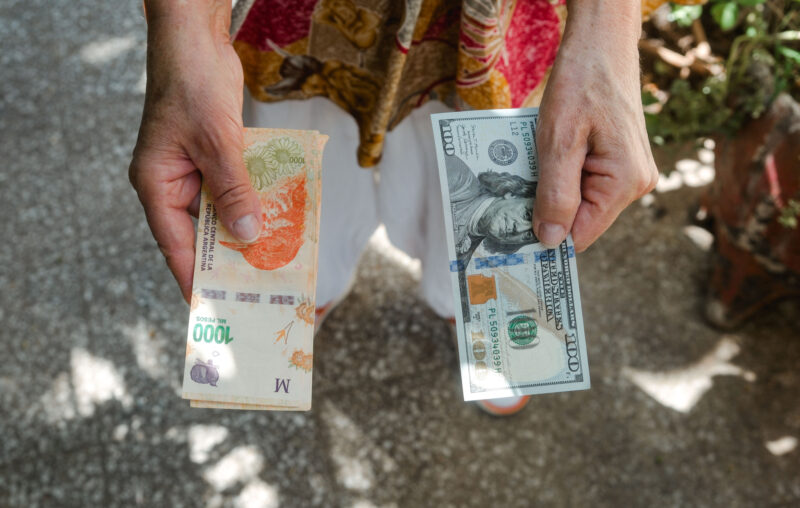
Defenders of the Argentine central bank are questioning the feasibility of dollarization. They say Argentina would need a staggering 40 billion US dollars to dollarize. With the central bank’s net reserves at a historical low, emerging markets economist Guillermo Mondino warns of the dangers of dolarización sin dólares.
Mondino and others who advance this argument are mistaken on two counts. First, Argentina does not require $40 billion to dollarize Second, dollarization is not a simple spot transaction. It is a process that can span several months.
Where do dollarization critics come up with the $40 billion figure? It is the dollar value of the Argentine monetary base and central bank liabilities before the last significant shift in the exchange rate. Today, with a considerably devalued peso, this number has fallen below that threshold.
The basic idea behind the claim that Argentina would need $40 billion is straightforward. Under dollarization, Argentina would replace its peso with the dollar. To do so, it must have sufficient dollars to convert its currency in circulation and central bank liabilities. The debate is not so much about this straightforward approach, but rather the number of dollars that would be sufficient. Those familiar with real-world cases of dollarization, like those of Ecuador and El Salvador, note that Argentina could dollarize with far fewer dollars than the anti-dollarization crowd claims.
Let’s start with the monetary base. Base money consists of currency in circulation and reserve balances held by banks at the central bank. Only the former requires conversion into dollars. At the prevailing free market exchange rate, approximately $6 billion would suffice to replace the peso currency in circulation with US dollars. How much of that $6 billion Argentina would need at the outset would depend, in part, on the approach taken to manage the currency transition. Ecuador, for example, enforced a mandatory dollarization of sucres in circulation, which took approximately nine months to complete. In contrast, El Salvador pursued a voluntary dollarization of colones, whereby those interested in dollarizing could either make a bank deposit (all of which are denominated in dollars) or pay their taxes in colones. In El Salvador, it took approximately two years to fully dollarize the currency in circulation. Neither country required the total dollar equivalent of its currency at the outset, and El Salvador required a much smaller share.
In addition to circulating currency, the central bank would also convert its financial liabilities to dollars. This includes short-term peso-denominated notes and bills. At the prevailing market exchange rate, the central bank’s financial liabilities are worth between $14 and $15 billion.
Similar to currency in circulation, there are many methods to gradually dollarize these financial liabilities. Emilio Ocampo and I have proposed one approach. Just like any bond that is gradually paid off through a sinking fund schedule, the central bank’s liabilities can be dollarized and redeemed over time.
Implementing dollarization in Argentina may be a formidable undertaking, but it is far from impossible. Argentina needs approximately $6 billion over several months to manage currency exchanges, and even less if it takes a voluntary approach. Argentina would certainly be able to secure $6 billion if a new government were to introduce a credible set of reforms.
Dollarization has arguably never been cheaper for Argentina than it is today because much of the cost has already been incurred. Individuals and businesses have converted many pesos to dollars on their own. Official dollarization would largely formalize the informal dollarization that has already occurred.
To be consistent, dollarization critics should be more concerned about alternative stabilization plans designed to salvage the peso. These reforms, which would necessitate some form of exchange rate controls, would likely require even more dollars than dollarization. If Argentina lacks the resources for dollarization, it most certainly does not possess the means to rescue the peso. The alternative is to continue on the current course, and approach dollarization under circumstances akin to Zimbabwe rather than the more successful experience of Ecuador. Dollarization not only provides the most cost-effective escape from Argentina’s monetary quagmire, but also presents the reform with the highest prospects of long-term success.

0 Comments